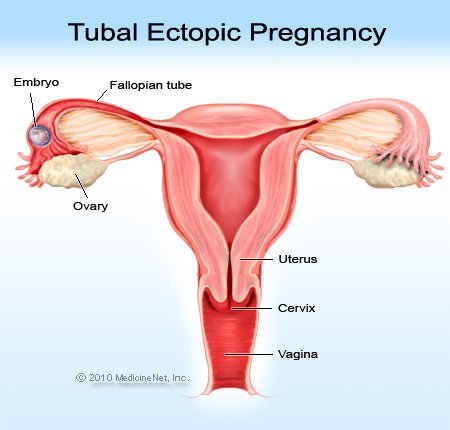
As you may know, there are two main fallopian tubes that connect the ovaries to the uterus. Infection can cause partial or full obstruction of these tubes with scar tissue, literally blocking the egg from reaching the uterus. Any condition (including infection, scar tissue on the tubes (tubal ligation, pelvic inflammatory disease (PID), or other obstruction that impairs the tubes (such as narrowing or twisting of the tubes (tubal ligation) or damage to their inner wall (scar tissue), which causes narrowing or twisting of the tubes) that restricts the fallopian tubes or creates scarring increases the risk of having an ectopic pregnancy – a pregnancy developing outside of the uterus: the fallopian tubes become engorged with fluid and then begin to separate from one another. Although they can often be repaired and reattached to the uterine wall, this is not always possible.
If an ectopic pregnancy does occur, it can result in many complications that require immediate treatment. These complications include permanent infertility and life-threatening blood clots.
The fallopian tubes are made up of three major sections: the head, the neck, and the branch
In women, the branches are the lesser of the two. The larger branch is what the egg goes through before being fertilized by the sperm. The smaller branch is what the sperm attaches itself to and pushes into the uterus to fertilize. When either the sperm or the egg to attach itself to the fallopian tubes, scar tissue forms.
Scar tissue is usually composed of fatty tissue such as scar cell and fibroids (plump growths). Because it contains no nutrient and is extremely dense, scar tissue is difficult to remove. It is also difficult to remove because scar cells multiply rapidly, which means that scar tissues can form in large numbers and produce new tissue and new scar tissue. scar tissue can continue to multiply for a long time after surgery has been performed. This means that scar tissues form and then grow, growing to a size and density that prevent the fallopian tubes from opening or that could potentially allow fertilization by the egg.
Scar tissue is the main reason scar tissue interferes with pregnancy. Because the scar tissue is very dense, the scar tissue forms a kind of “wall” around the fallopian tubes, forming a kind of protective “shield”. Fallopian tubes can only pass through the wall wall if there is an open or relatively unobstructed opening. Scar tissue is especially dense in areas where scar tissue has formed. The best example of this would be the ovary, a very thin part of the reproductive system that provides an opening for the egg to fertilize. Scar tissue is not only very dense, but it also coats the tubes that connect the fallopian tubes to the ovary in places such as the neck or abdominal wall and causes scar tissue to form around the holes where the tubes are supposed to meet.
The fallopian tubes are important for pregnancy because they are necessary for the proper growth of eggs and the development of the embryo, which forms when fertilized eggs are released during intercourse. Fertilization is most successful when fertilization occurs during intercourse, which is impossible without a hole in this protective scar tissue. The scar tissue blocks the opening, which is why the fallopian tubes and ovaries are so important to pregnancy.
However, scar tissue can also block the fallopian tubes, especially if you have a condition that limits a woman's ability to move the fallopian tubes. Some of these conditions include endometriosis (an overgrowth of tissue on the lining of the uterus, sometimes causing pelvic pain), endocarditis (an infection that causes inflammation of the heart valve and coronary blood flow), and uterine fibroids. All of these conditions cause thicker and deeper scars than usual. The scar tissue is so thick that it completely clogs up the tubes, making it impossible for fallopian tubes to become pregnant under these conditions.
In addition to blocking the fallopian tubes, scar tissues are also responsible for many other problems associated with pregnancy. For example, scar tissues can prevent the release of prostaglandins (a chemical produced by the pancreas) from the brain, thus impairing the function of the pituitary gland and the brain's ability to regulate hormone production and secretion.
